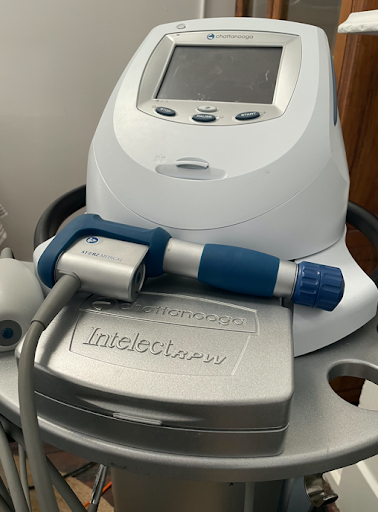Shockwave therapy for plantar fasciitis

Shockwave therapy for plantar fasciitis
Plantar fasciitis is one of the most common causes of heel pain. The ligament that connects the heel bone to the toes becomes irritated and inflamed. If the condition is left untreated for a long period of time, the fascia losses normal elasticity, blood flow to the tendon reduces and there are changes to the structure of the ligament. This is what leads to persistent heel pain.
Shockwave therapy, also known as extracorporeal shockwave therapy (ESWT) is a conservative, non-invasive treatment for plantar fasciitis. A hand-held probe is used to focus on a specific site, which delivers high energy sound waves and pressure pulses. This energy encourages tissue healing and regeneration, it stimulates blood flow to the area and provides almost instant pain relief.
Clinical studies have shown that shockwave therapy is an effective treatment and has low side effects, when treating plantar fasciitis. Studies have shown that shockwave therapy reduces the thickness of the plantar fascia, which indicates healing, as well as reduces the pain associated with this condition. Shockwave treatment can also be used alongside other conservative treatments, which allows for a faster recovery.
It is common that you would need more than one session of shockwave therapy. Depending on the severity of the condition, as well as whether the condition is acute (symptoms less than 4 weeks) or chronic (symptoms more than 4 weeks), patients usually need between three to six sessions. Your podiatrist will be able to determine how many sessions will be needed, as well as frequency of the treatment.
References




